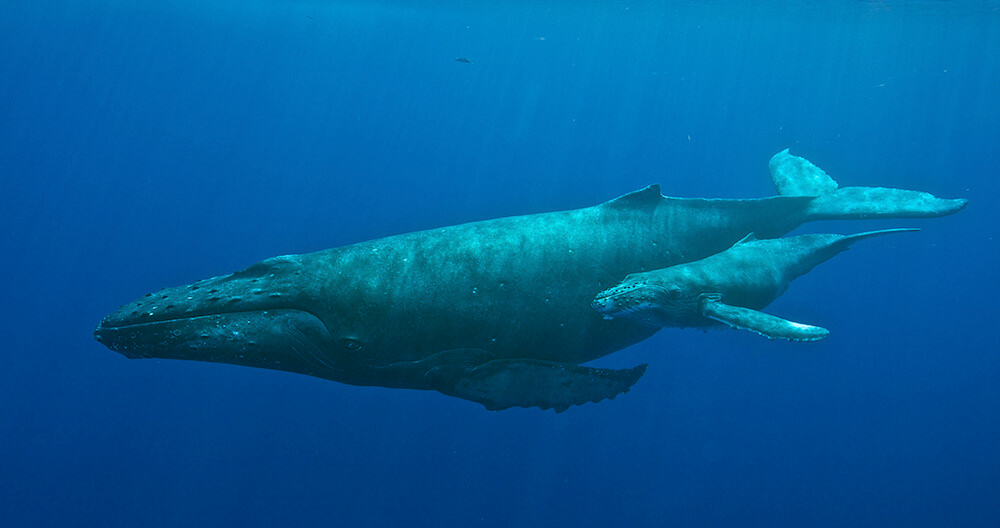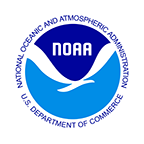How You Can Help

More than half of the humpback whales in the North Pacific seasonally use the waters around the Hawaiian Islands as their principal breeding and calving wintering ground. Everyone has a role to play in helping this iconic species.
Respect Humpback Whales
Read about the wildlife, viewing sites, and local regulations to get the most from your wildlife viewing experience. Responsible recreation and boating are key: keep a safe distance from whales and other animals, don’t touch them, and help reduce trash.
Support Whale Entanglement Efforts
Saving humpback whales in Hawai‘i from entanglement threat is a community effort. However, if you should come across an entangled whale, please do not take matters into your own hands and definitely DO NOT jump in the water.
While perhaps well-intentioned, disentangling a large marine mammal is a dangerous undertaking. It poses possible risk of injury or even death to would-be rescuers and to the animal itself. People have died. Let trained and authorized teams respond by reporting the entanglement to the NOAA Fisheries Hotline at (888) 256-9840. If a phone call is not possible, hail the US Coast Guard on VHF channel 16. Reporting is not only safer, but more productive in regard to getting the whale free.
If possible, provide us with the means to contact you, the location of the animal (if the animal is moving, provide an estimate of heading and speed), and information on the nature of the entanglement and description of the animal. If you can, take pictures or video of the animal from a safe and legal distance (at least 100 yards away). Do not follow directly behind the animal as this may be interpreted as a threat display by the animal, and you may get caught in trailing gear.
All this information will allow us to assess the entanglement and animal to determine whether a response can and should be mounted. In fact, only half of the entanglement reports we receive actually involve an entanglement. Many of these misreported observations end up being white-flippered humpback whales. One in five humpback whales in the North Pacific have white flippers, which, when viewed from a nearby vessel or shore, appear blue-green in the water and are typically misinterpreted as netting, kayaks, and even surfboards. Most of these misreported observations are shore-based. Other examples of misreported observations include: animals in the proximity of gear, but not entangled; reflections off the wet backs of animals interpreted as buoys; calves being interpreted as gear; surface behaviors, such as breaching, being interpreted as animals trying to throw an entanglement; and snorkelers or divers in the water (“there’s a whale entangled and it is trailing a red and white flag”).
When a whale is entangled, federal and state regulations in place to protect these animals and ocean users still apply. Unless otherwise notified, you must stay a safe and legal distance (100 yards) from the animal at all times. If a response is to be mounted and you are able to stand by safely, it is important to stand by (at a safe distance) until the response team arrives. When no one stands by the animal, it is usually not relocated that day.
Not every entangled whale is a candidate for entanglement response. However, by working together we will do our best to save as many of these magnificent animals as possible and at the same time, gather the information needed to reduce entanglement threat in the future.
If You See a Whale that Might Be Injured or Sick
Like entanglements, do not take matters into your own hands, but instead report injured, sick, or otherwise compromised humpback whales to the sanctuary or call the NOAA Hotline at (888) 256-9840. Please provide date and time, location information, nature of distress, behavior, and the animals mobility/direction of travel. If you are able, provide images and/or video from a safe and legal distance. Depending on conditions and resources, the sanctuary may mount an on-water assessment to garner additional information. All information is compiled and analyzed so we can better understand possible threats and concerns.
U.S. Whale Entanglement Response Level 1 – Pacific Islands Region
This Level 1 online training will prepare you to properly assess, document, and report critical entanglement information to the highly trained disentanglement experts prior to the launch of a response effort. It will not prepare or qualify you to perform or assist in the actual process of disentangling a whale.
Support Rescue Efforts
Find out how you can help support the sanctuary's rescue efforts by visiting the National Marine Sanctuary Foundation’s website.

